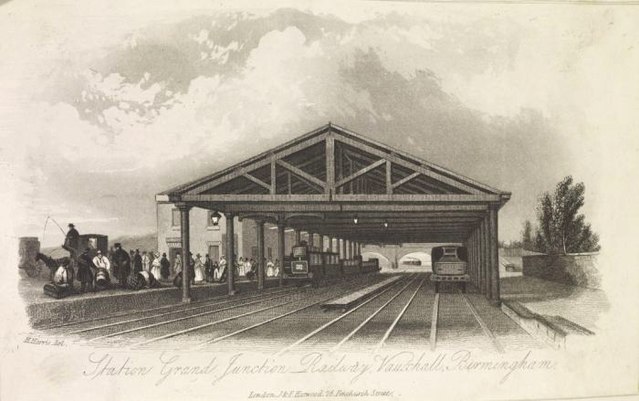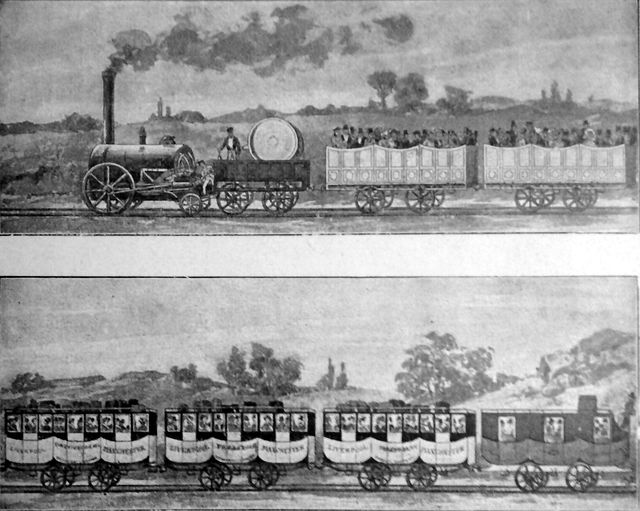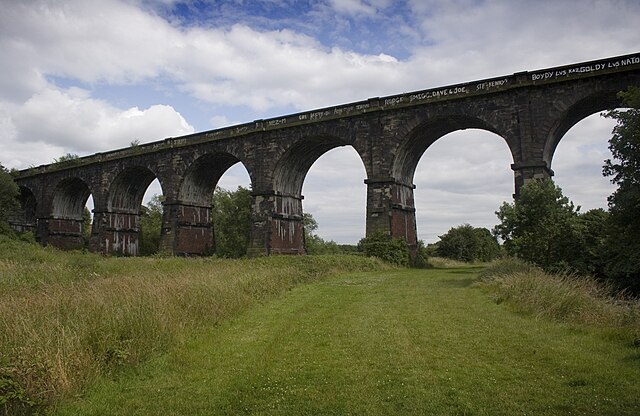The Grand Junction Railway (GJR) was an early railway company in the United Kingdom, which existed between 1833 and 1846. The line built by the company, which opened in 1837, linked the Liverpool and Manchester Railway to Birmingham via Warrington, Crewe, Stafford and Wolverhampton. This was the first trunk railway to be completed in England, and arguably the world's first long-distance railway with steam traction. It terminated at Curzon Street Station in Birmingham, which it shared with the London and Birmingham Railway (L&BR), whose adjacent platforms gave an interchange with full connectivity between Liverpool, Manchester and London.
"Station, Grand Junction Railway, Vauxhall, Birmingham". Engraving by H. Harris, 1841.
Newton Road station on the Grand Junction Railway, one of the original stations of the line, in 1839. The station was relocated twice and is now defunct.
Joseph Franklin's Curzon Street Station for GJR
Columbine in LNWR livery
Liverpool and Manchester Railway
The Liverpool and Manchester Railway (L&MR) was the first inter-city railway in the world. It opened on 15 September 1830 between the Lancashire towns of Liverpool and Manchester in England. It was also the first railway to rely exclusively on locomotives driven by steam power, with no horse-drawn traffic permitted at any time; the first to be entirely double track throughout its length; the first to have a true signalling system; the first to be fully timetabled; and the first to carry mail.
A lithograph of the Liverpool and Manchester Railway crossing the Bridgewater Canal at Patricroft, by A. B. Clayton.
Illustration of the railway in 1830
A replica LMR coach and Rocket at the Rocket 150 event
Stephenson's viaduct crosses the Sankey Brook, and the remains of the Sankey Canal. The viaduct is in use to this day.








